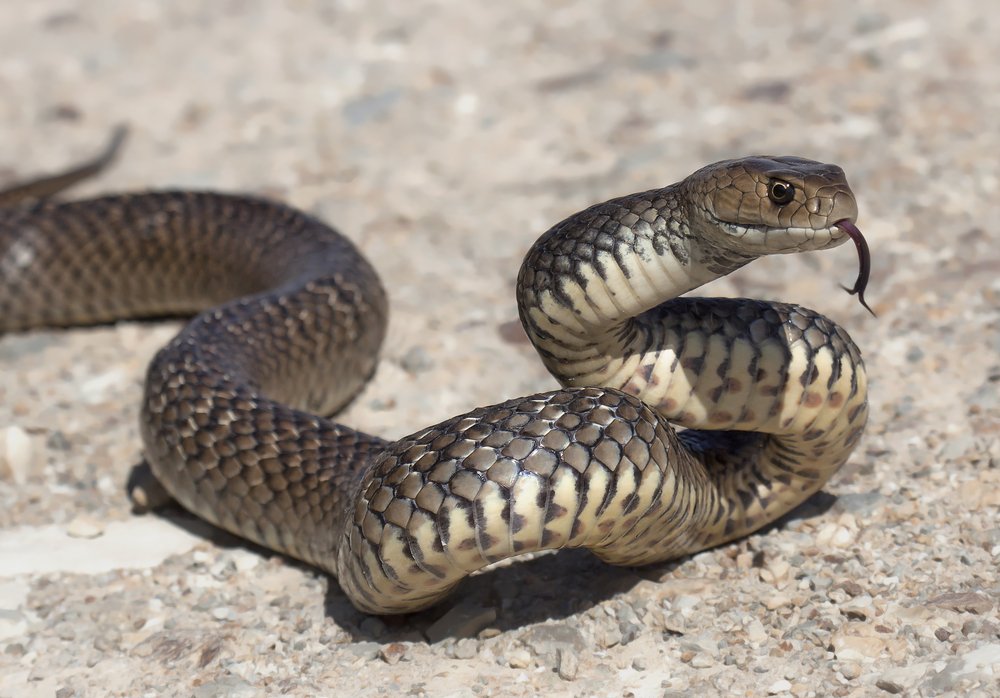This is the first article in a two-part series on the risks posed by snakes on school grounds and on school excursions. In this series, Kieran Seed, School Governance Reporter, investigates how schools should respond to snake risks and the consequences when snakes and schools intersect.
Snakes: a natural part of Australian life
Snake bites are an all too common occurrence in Australia. And during snake breeding periods (September - October), there are more snakes around which increases the chances of humans and snakes interacting. Only a few weeks ago a toddler in Queensland was bitten by a coastal taipan in his backyard, suffering brain damage. A similar incident occurred in Western Australia around a month ago.
Snakes are protected animals under State/Territory Wildlife legislation (such as the Victorian Wildlife Act 1975) and consequently cannot be completely eradicated from publicly accessible areas. While advice can be provided on how to reduce the chance of snakes coming onto private property, and councils and authorities can take steps to reduce the likelihood of people coming into contact with snakes on public land, it is impossible to remove all of the risks of snake bites.
Nevertheless, as current court proceedings in Victoria demonstrate when a snake bite occurs on a school excursion and a student dies, questions arise in relation to the duty of care and liability.
The facts
Last week, the Victorian Government was sued by a mother over the death of her son from a brown snake bite while on school camp at a government school.
The year 1 boy was allegedly bitten in October 2013, while at the Belgrave Recreation Centre and despite staff efforts to resuscitate him, he later died in hospital. His mother has been left with severe depression and other psychological conditions, which she continues to struggle with, two years later.
The Victorian Government, as the body responsible for the boy’s primary school and its staff, is being sued for negligence, in addition to the camp operators. The allegations are that these parties breached their duty of care to the boy by failing to:
- warn camp attendees about the risks of snakes;
- adequately supervise him; and
- ensure the safety and security of the premises from hazards likely to cause injury or death.
How can a school reduce the risk of a tragedy like this happening?
Snakes – a duty of care issue
As we have previously identified, the first step for a school to learn from these incidents is to understand the extent of their duty of care obligations.
Schools are expected to take reasonable steps to protect against foreseeable injury. This is a concept schools are constantly instructed they must uphold and maintain to the highest possible standard, by both the courts and Education Departments. But what does it mean practically?
Schools owe a duty to students under their care to take reasonable steps to avoid them suffering harm from foreseeable risks. But what is foreseeability?
Australia has approximately 140 species of snake, some of which are among the most deadly in the world. The suspected culprit in the case mentioned – the eastern brown snake – is considered to be the second most venomous land snake globally. While the inland taipan is Australia’s (and the world’s) most venomous land snake, it has never had a reported fatality and is rarely encountered. The eastern brown, by contrast, has its preferred habitat along major Australian population centres, significantly increasing its encounter rate.
As temperatures rise around Australia, so too does the risk of snake encounters, unfortunately with an increased chance of bites occurring. About 3000 snake bites are recorded around the country yearly, and while on average only a few of those will prove fatal, it is a clearly foreseeable risk.
Snakes at school
The risk of snake bites is foreseeable even within school grounds, particularly where a school is located in a rural area. A few weeks ago, it was reported that an ambulance was called to a Queensland primary school following a suspected snake bite. A similar incident occurred in Western Australia earlier in the year, when a student was bitten by a tiger snake in a sandpit.
The risk posed by a snake entering school grounds varies depending on where the school in question is located. The eastern brown snake previously described is distributed across Australia, but is mainly located along the east coast. But there are many other species around the country (particularly in the Northern Territory), both venomous and non-venomous.
It is hence difficult to tell at a glance whether a snake poses a serious risk to students. A teacher may well ask “What Snake is That?” (and a website exists to help answer that question), but ultimately a snake encountered on school grounds should be treated as dangerous and managed accordingly.
There are many ways to respond to the risk of snakes in the school context. Schools should have policies in place focussing on discouraging snakes from entering school grounds. This could include maintaining grass levels on and around the premises, following appropriate waste management and controlling rodent populations, and regular inspections of areas (such as sandpits) where snakes may present the highest risk.
They should also have procedures to respond to the discovery of a snake. At one school in Queensland, students and staff are briefed and trained in a Snake Drill which is followed wherever a snake enters school grounds. Schools should also contact their local Wildlife Rescue/Management service for advice on snake management or to remove a snake which has found its way into a building, classroom or into an area where it poses a serious risk to students.
Critical incident and first aid policies should also appropriately manage the consequence of a snake bite occurring, remembering that first aid kits, the numbers and location and training of first aiders, must be geared towards this foreseeable hazard.
Is your school in an environment where snakes are likely to be?


